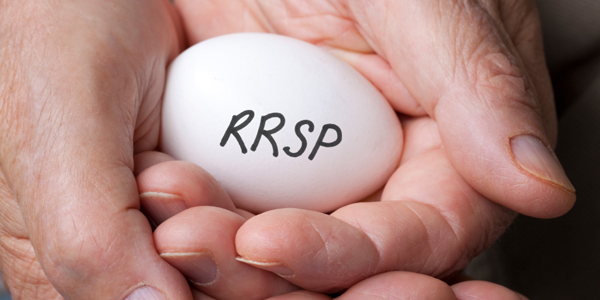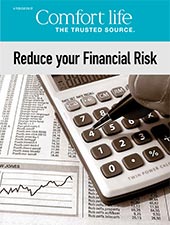Will Your Retirement Savings Run Out?
Most people rely on a constant source of income in their retirement. A major source for this income comes from Registered Retirement Income Funds (RRIFs)—money that people saved in RRSPs for retirement during their working years. So it is important that your RRIF doesn’t run out of money. Determining whether you will outlive your money is not as difficult as you might think.
Step One: How Long Will Your Income Need To Last?
To start you must determine how long you need your income to last. Since none of us know the exact date we will die, this can be a difficult challenge. But for couples reaching the age of 65, there is a 50 per cent chance that one of the couple will live to age 90 or longer. With this in mind, I generally use age 90 as the life expectancy when I do retirement plans for my clients.
Step Two: Calculate RRIF Projections and Make Adjustments
The second step is to calculate your RRIF projections each year and adjust your income if needed. With RRIFs you must draw a minimum income (as determined by the table below), however, there is no maximum amount you can withdraw from your account. By using an online RRIF calculator or asking your financial advisor for a projection, you will better understand how long your money will last based on the amount you withdraw and an assumed return on your investments.
| Age | Factor | Age | Factor | Age | Factor | Age | Factor |
71 | .0738 | 77 | .0815 | 83 | .0958 | 89 | .1271 |
72 | .0748 | 78 | .0833 | 84 | .0993 | 90 | .1362 |
73 | .0759 | 79 | .0853 | 85 | .1033 | 91 | .1473 |
74 | .0771 | 80 | .0875 | 86 | .1079 | 92 | .1612 |
75 | .0785 | 81 | .0899 | 87 | .1133 | 93 | .1792 |
76 | .0799 | 82 | .0927 | 88 | .1196 | 94 + | .2000 |
If the projections show that you will run out of money before the age of 90 you have two options: withdraw less money (but you must always withdrawal the minimum required) or make changes to your investments. If you are invested too conservatively, your investments are not growing enough to replace the money you withdraw. For example, if you are invested in GIC’s that are currently earning a 2 per cent return or less, and your minimum RRIF withdrawal rate is 7 per cent, your RRIF balance will reduce by 5 percent. Every year as your balance shrinks, there are less invested assets, making it even more difficult to replenish your balance through investment gains.
Alternatively, if your RRIF portfolio is invested too aggressively, you could be exposed to the ups and downs of the market. When you are receiving income from your RRIF, this market volatility is your enemy and can result in significant shrinkage of your RRIF balance.
Consider a Balanced Investment Portfolio
For most retirees a balanced investment portfolio based on your age and risk tolerance is needed. It is like the process of growing bananas: the tree grows the amount of bananas you’ll have, but before you can eat the bananas, some must be taken off the tree and allowed to ripen.
Managing the investments in your RRIF is a similar process. Investing in equities and stocks help the value of your RRIF grow (like the banana tree). But the money in your RRIF should not be withdrawn straight from equity investments, it should be withdrawn from the more stable income (the ripe bananas). Gradually money will move from equity to income investments before you withdraw the money from your RRIF. A professional advisor should be able to help you strike a balance between equities and income, but if you don’t feel they understand how to properly manage the investments in your RRIF, it is time to find another professional you trust to get things in order. To protect your retirement income for life, take the time to do this RRIF tune-up annually.
Written by Bruce Field, CLU, ChFC, EPC
Bruce Field is a managing partner with WSC Insurance Group (http://www.wscgroup.ca/author/bfield/) in Oakville, Ontario. Bruce has over 38 years of experience in retirement and estate planning and is a Chartered Life Underwriter, Chartered Financial Consultant and an Elder Planning Counselor.
* * * * *
Do you feel secure about your retirement plan? Share your thoughts in the Comments section below.
Related:
The Impact of Care on Your Retirement
3 Ways to Look Out For Your Parents Finances
Get Your RRSPs Working For You


